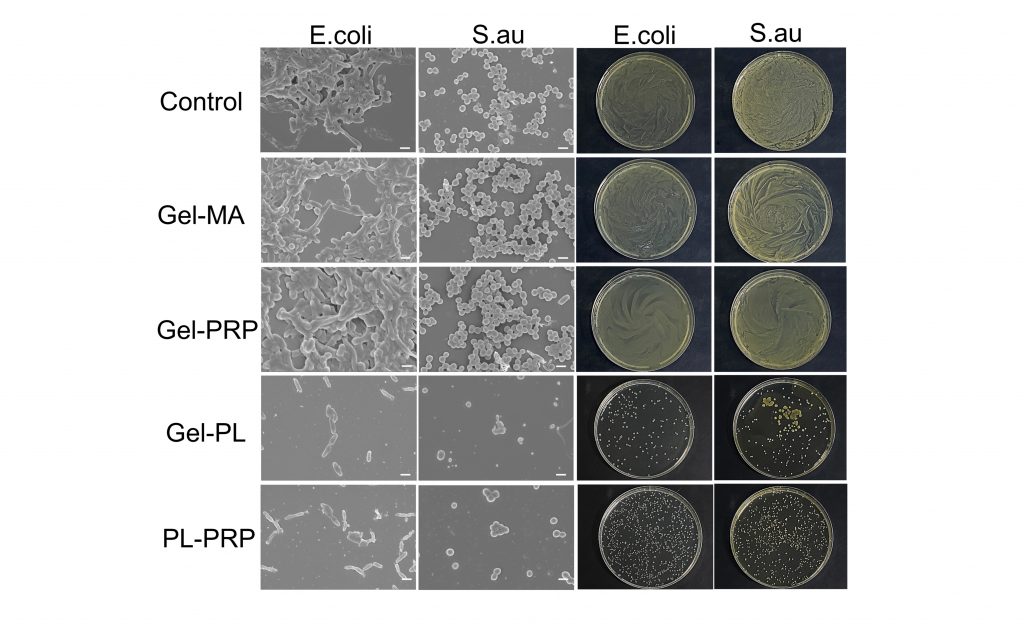Hydrogel infused with amino acid kills bacteria naturally and promotes cell growth.
From the Journal: APL Materials
WASHINGTON, April 2, 2024 – Hydrogels are popular for use in skin ailments and tissue engineering. These polymer-based biocompatible materials are useful for their abilities to retain water, deliver drugs into wounds, and biodegrade. However, they are complicated to manufacture and not very resilient to external forces like rubbing against clothing, sheets, or wound dressings. They are also not inherently able to battle bacterial infections, so they are often infused with antimicrobial drugs or metal ions, which can cause antibiotic resistance and negative effects on cell growth.

In a paper published this week in APL Materials, by AIP Publishing, researchers created a hydrogel that is easier to synthesize, contains natural antibiotic properties, and promotes cell growth.
“A diabetic patient may have skin wounds that do not heal easily due to metabolic disease,” author Jing Sun said. “The patient may try to treat the wounds with topical medicines such as erythromycin, and it may be effective at first, but over a long period of time, it may fail to relieve symptoms. This could be due to antibiotic resistance.”
Using the common hydrogel Gel-MA, they added the amino acid polylysine and platelet-rich blood plasma to create properties that are well-suited to wound care. The result is a hydrogel that is stronger, expands in the wound, lasts longer, kills bacteria, and creates a healthy environment for new cells to grow.
“The hydrogel continuously releases polylysine on the wound surface and continuously inhibits bacterial growth,” Sun said. “We chose ε-polylysine because it can inhibit the growth of bacteria and solve the problem of antibiotic abuse, drug resistance, and does not affect the proliferation and development of cells. It can also conjugate with gelatin methacrylate, which plays an antimicrobial role and enhances the mechanical strength of the hydrogel.”
In tests with E. coli and S. aureus, the bacterium that causes staph infection, the hydrogel damaged bacteria cell membranes and led to bacterial cell death. For healthy cells, the inclusion of platelet-rich blood plasma resulted in a release of growth factors and an increase of viable cells.
“The most interesting and exciting moment for me was when we mixed the polylysine and platelet-rich plasma solutions to see if they could form a hydrogel under UV irradiation,” Sun said.
The experiment worked, and the hydrogel can be cured under a UV lamp for 30 seconds instead of curing by repeatedly freezing and thawing for up to 8 hours.
“As a clinician and researcher in dermatology, I have the obligation to provide better treatments for patients,” Sun said. “Patients with chronically infected wounds combined with metabolic diseases, such as diabetes, malnutrition, and other diseases, as well as long-term bedridden patients will be helped by this solution.”
###
For more information:
Wendy Beatty
media@aip.org
301-209-3090
Article Title
Authors
Peiyu Yan, Xiangru Chen, Xin He, Zhaoyang Liu, and Jing Sun
Author Affiliations
Department of Dermatology, China-Japan Union Hospital of Jilin University, Changchun, Jilin 130033, People's Republic of China
